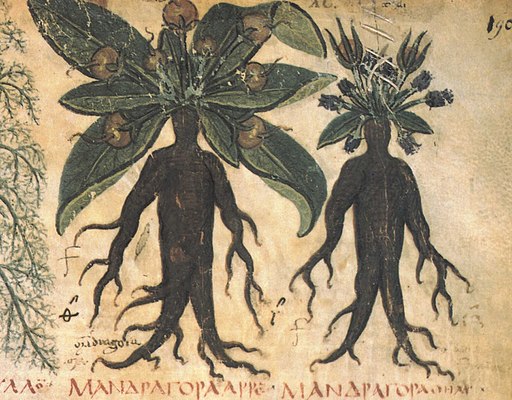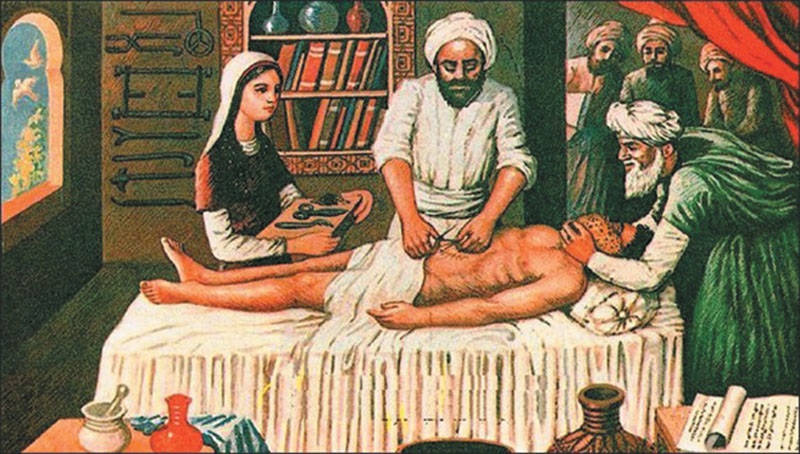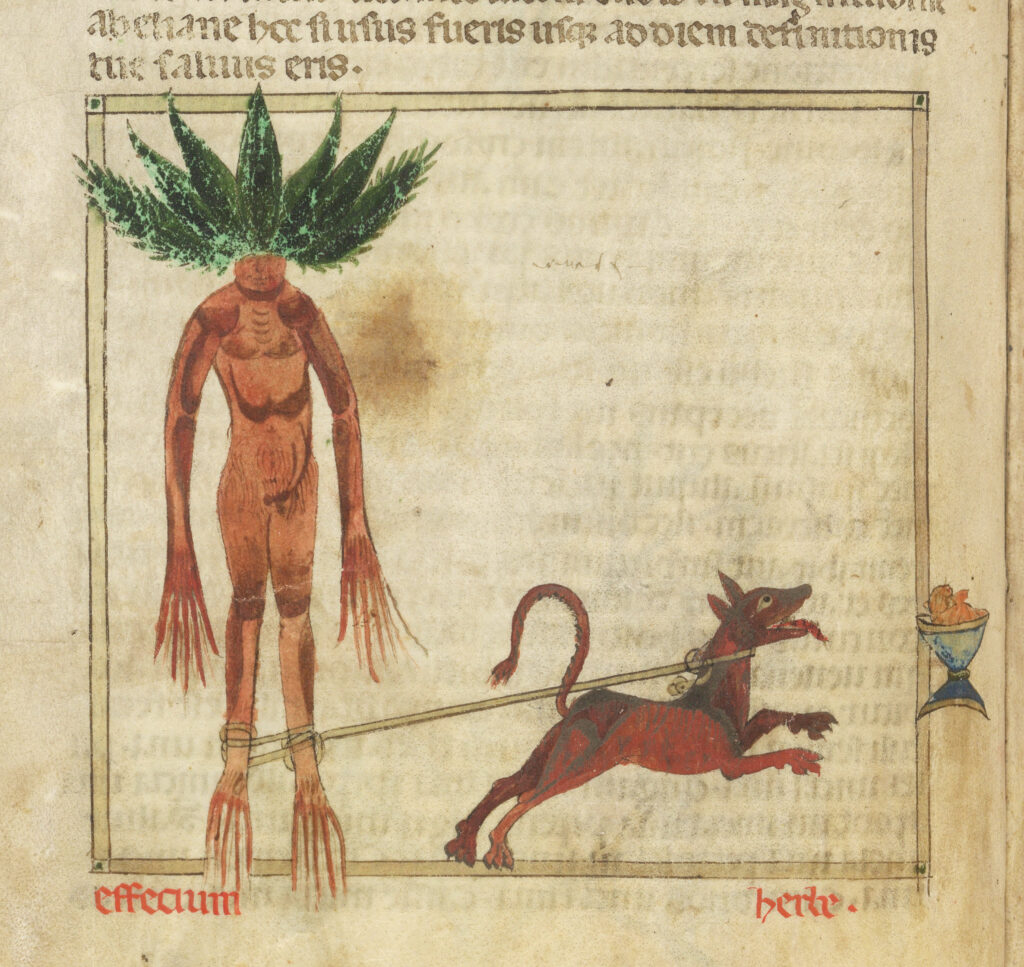The use of mandrake as a sedative dates back to ancient times, though its exact origins remain unknown. This powerful plant appears on ancient texts, tablets and carvings, proving its long history in medicine.
USED BY ANCIENT EGYPTIANS
Depictions of mandrake are carved into tombs in Luxor-Thebes, dating from the 16th to the 14th centuries BCE. Additionally, mandrakes were discovered in the tomb of King Tutankhamun, indicating they were imported from Syria and North Africa. A 13th-century tablet even illustrates Princess Meritaten, daughter of King Amenhotep IV and Queen Nefertiti, presenting a mandrake plant to her husband. The plant was used as an aphrodisiac, a healing herb, and in fertility rituals.

HOW ANCIENT GREEKS EASED PAIN
Greek philosopher Celsus prescribed it for toothaches, while Pliny the Elder recommended it to “dull the sense” before surgery. During Nero’s reign, it became part of dental procedures. Dioscorides, a Greek physician travelling with Nero’s army, documented in De Materia Medica how mandrake induced deep sleep when combined with wine. Hannibal, the Carthaginian general, reportedly used mandrake-laced wine to sedate enemies, a tactic later adopted by Julius Caesar.

A SEDATIVE DURING ISLAMIC GOLDEN AGE
Perhaps the most significant Arabian scientist was Ibn Sina (c. 980 to 1037 CE), also known as Avicenna. In his renowned Canon of Medicine, he identified various plants with pharmacological properties, including mandrake, opium, and henbane. He developed the Spongia Somnifera—a sponge infused with mandrake, opium, and other sedatives that was applied to patients’ nostrils. This technique persisted until ether anesthesia emerged in the 19th century.

UPROOTING MANDRAKE BY TYING IN TO A DOG
Harvesting the mandrake was a dangerous undertaking steeped in elaborate folklore. According to legend, the plant could shine at night, attempt to escape when approached, and unleash a fatal scream when uprooted. To avoid certain death, people devised ingenious methods: some tied the plant to a dog, sacrificing the animal to extract the root, while others used long poles to uproot it from a safe distance.

DANCING WITH THE DEVIL
Mandrake was surrounded by legends, believed to shrink from ordinary people but stay still for witches. Harvesting required night rituals, often under a full moon, or its magic would be lost. Mandrake became a crucial ingredient in witches’ flying ointments and magical potions, known for their mind-altering and hallucinogenic effects. Some believed witches used these substances to facilitate supernatural gatherings or meetings with demonic entities.

THE SCREAMING MANDRAKE IN HARRY POTTER
J.K. Rowling vividly brings mandrakes to life in Harry Potter and the Chamber of Secrets, portraying them as baby-like plants whose cries can be deadly. In Herbology class, Hogwarts students must replant young mandrakes while wearing earmuffs for protection. These mandrakes later play a crucial role in the plot, as they are used to create a potion that cures students who have been petrified.
MANDRAKE IN SCIENCE
Over 80 compounds have been identified in various Mandragora species, including alkaloids and essential oils, which contribute to its medicinal and aromatic uses.
Its essential oils are used for their fragrance and therapeutic benefits in aromatherapy.
The mandrake’s properties are largely attributed to the presence of highly poisonous alkaloids such as scopolamine, atropine, mandragorin, and hyoscyamine, which can cause hallucinations, delusions, seizures, and even death.
While this root is not used in modern pharmaceuticals, active ingredients found in mandrake, such as hyoscyamine and scopolamine, are present in medications that induce sleep, produce unconsciousness and indifference to pain, or serve as antispasmodics and antiemetics.
REFERENCES:
1 .Zarcone, T. (2005) ‘The Myth of the Mandrake, the “Plant-Human”’, Diogenes, 52(3), pp. 115–129. doi:10.1177/0392192105055178.
2. Harrison, R.K., 1956. The mandrake and the ancient world. The Evangelical Quarterly, 28(2), pp.87-92.
3. Calabrese, A. (2016) The history and uses of the magical mandrake, according to Modern Witches, Atlas Obscura. Available at: https://www.atlasobscura.com/articles/the-history-and-uses-of-the-magical-mandrake-according-to-modern-witches (Accessed: 29 January 2025).
4. Chidiac, E.J., Kaddoum, R.N. and Fuleihan, S.F., 2012. Mandragora: anesthetic of the ancients. Anesthesia & Analgesia, 115(6), pp.1437-1441. Dunwich, G., 1996. The Wicca Garden: A Modern Witch’s Book of Magickal and Enchanted Herbs and Plants. Citadel Press.
5. Hanuš, L.O., Řezanka, T., Spížek, J. and Dembitsky, V.M., 2005. Substances isolated from Mandragora species. Phytochemistry, 66(20), pp.2408-2417.
6. Choudhary, S., Panwar, D., Tyagi, A., Bisht, K., Sharma, N., Bisht, B. and Sharma, P., A research on the chemical constituent, characterization and remedial benefits of a native medicinal herb.

Leave a Reply